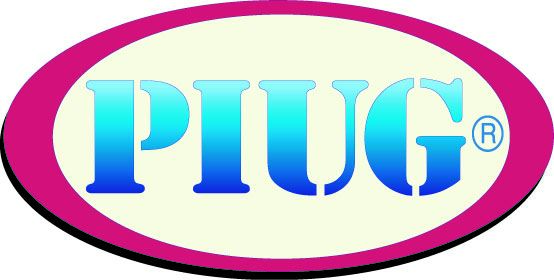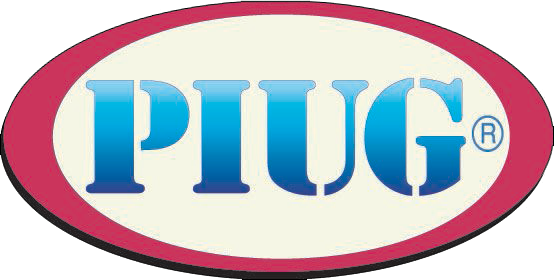PIUG 2012 Northeast Conference
Monday, October 22 to Friday, October 26, 2012
The Heldrich Hotel
10 Livingston Avenue
New Brunswick, New Jersey, USA 08901
Main Hotel Phone: +1 (732) 729-4670 | Main Hotel Fax: +1 (732) 729-4672
Reservations: +1 866-609-4700
Program – Tuesday, October 23, 2012
| 8:00-8:45am |
Breakfast/Registration
Vendor Exhibits Open |
| 8:45am - 11:45am |
Morning Presentations
Session Chair – Lucy Akers
|
| 8:45am - 9:00am |
Welcome and Introductory Remarks
Shelley Pavlek and Kim Miller - PIUG 2012 NE Conference Co-Chairs
Introduction and Housekeeping
Lucy Akers, PIUG 2012 NE Conference Program Chair
|
| 9:00am - 9:30am |
U. S. Government Funding and Patented Research; Making the Connection between Patents and the Technical Literature
Henry H. Murray, ExxonMobil Research and Engineering, Information Research and Analysis
|
| 9:30am - 10:00am |
Analysis and Visualization of Patent Information and Non-Patent Literature: Getting the Big Picture
Donald Walter, Thomson Reuters
|
| 10:00am - 10:15am |
Product Reviews by Platinum Sponsors:
BizInt Solutions, STN International, Thomson Reuters
|
| 10:15am - 10:45am |
Break
Exhibits Open
|
| 10:45am - 11:15am |
2012 Patent Reform - Breaking it Down
Richard Neifeld, Neifeld IP Law, PC
|
| 11:15am - 11:45am |
AIA’s Impact on the Scope and Timing of Patent Searching
Brian Walsh, Bristol-Myers Squibb
|
| 11:45am - 1:00pm |
Lunch
|
| 1:00pm - 6:00pm |
Afternoon Presentations, Roundtable Discussions, Exhibits, & Networking
Session Chair – Suzanne Robins
|
| 1:00pm - 2:00pm |
CPC Update: Updates on EPO and USPTO’s Joint Cooperative Patent Classification System
Christopher Kim, U.S. Patent and Trademark Office
|
| 2:00pm - 2:30pm |
The Markush Meatloaf
Edlyn Simmons, Simmons Patent Information Service, LLC
|
| 2:30pm - 3:00pm |
Extracting new value from IFI CLAIMS Comprehensive Database
Mike Baycroft, IFI Claims
|
| 3:00pm - 3:30pm |
Break
Exhibits Open
|
| 3:30pm - 4:15pm |
Round Table Discussions
Session Chair – Rick Williams
Concurrent round table discussions will run on the following topics:
- AIA and CPC and their Impact on Searching
- Analysis and visualization of patent (meta)data
- How do you manage alerts?
- Markush Structure Searching - Tools and Techniques
- PIUG Strategic Plan
- Semantic analysis of patent literature
- Training and Certification
|
| 4:15pm - 4:20pm |
Closing Remarks
Shelley Pavlek, Co-Chair
|
| 4:15pm - 6:00pm |
Exhibits Open and Networking Opportunities
|
| 6:00pm - |
Networking dinner at a nearby restaurant for interested participants
On-site coordinator – Rick Williams
|

Conference Abstracts and Biographies
Morning Presentations
"U. S. Government Funding and Patented Research; Making the Connection between Patents and the Technical Literature" 
Henry H. Murray
ExxonMobil Research and Engineering, Information Research and Analysis
The United States Government funds billions of dollars of research in a wide variety of fields through varied institutions and organizations. Some of this work is patented as well as published in the technical literature. Given the different target audiences for patents and the technical literature, different information may be available in these related documents. A search technique that identifies a definitive connection between US patents and literature articles will be presented. This approach to technical searching can be used to identify additional prior art or relevant material that might otherwise be overlooked.
Biography:
Hal Murray was formally trained as an inorganic chemist, Eastern Kentucky University and Yale University, and then broadened his background with postdoctoral studies at the University of Bayreuth, Germany and Texas A&M University. After a year at Engelhard, Hal joined Exxon Research and Engineering in 1989 [now ExxonMobil Research and Engineering] as a researcher. In 1996 Hal joined the Information Research and Analysis Group. Hal is a member of the EI EnCompass vocabulary task force. In addition to patent searching, Hal's other professional interests include competitive intelligence and data visualization.
"Analysis and Visualization of Patent Information and Non-Patent Literature: Getting the Big Picture" 
Donald Walter
Thomson Reuters
There are lots of sources of information today, and it is only natural that different literatures reveal different views of the state of the art. Having a single set of tools to analyze patents, scientific literature and business information gives complementary perspectives on a technology, enabling more robust decision making. We will present a case study illustrating the breadth of understanding you can achieve in this way.
Biography:
Donald Walter is a product specialist at Thomson Reuters where his primary job is to train users on Thomson Reuters' databases and solutions, specializing in patent and chemical information. He also works with the Thomson Reuters Search Service, conducting searches and analyses for legal and industrial clients, with a special emphasis on pharmaceutical and chemical subjects. Since joining the company, which was then Derwent Information, in 1992, he has given many presentations at national meetings, and been invited to speak at international meetings. He learned his craft at Exxon Research and Engineering, conducting patent and scientific literature searching for clients in the legal and technical departments. Don received his Ph.D. from Yale University in Chemistry. He lives just outside Washington DC.
"2012 Patent Reform - Breaking it Down" 
Richard Neifeld
Neifeld IP Law, PC
This talk will cover significant changes in U.S. patent law from 2011 to date, both statutory and case law.
Biography:
Rick Neifeld has a BS in physics and a BA in mathematics from University of Rochester, a Ph.D. in Physics from Rutgers University, and a law degree from George Washington University. Rick is a patent attorney and the founder of Neifeld IP Law, PC, which focuses on USPTO interference and related Board inter partes proceedings, and patent and trademark prosecution in the USPTO and abroad. Rick is also a former chair of the Interference Committee of the AIPLA, active in the USPTO inter partes proceedings bar, and former vice-chair of the AIPLA PCT Issues committee. He is widely published on patent law issues many of which appear on his firm's web site, www.Neifeld.com, and frequently speaks on patent law topics to bar and patent related organizations, and "present" on many patent attorney email list services. He also administers the popular-amongst-interference -practitioners "patentinterference" yahoo group list.
"AIA’s Impact on the Scope and Timing of Patent Searching" 
Brian Walsh
Bristol-Myers Squibb
The Leahy-Smith America Invents Act (“AIA”) transformed the U.S. patent system from a “first-to-invent” to a “first-to-file” system. The AIA also introduced some new post-grant trial proceedings, such as Post Grant Review and Inter Partes Review. We will discuss how our new “first-to-file” patent system and the new post-grant trial proceedings will change the scope and timing of patent searching.
Biography:
Brian Walsh is a patent attorney at Bristol-Myers Squibb (“BMS”). Prior to joining BMS in 2011, Brian was a patent attorney with ZymoGenetics, Inc. in Seattle, WA from 2002 – 2011. From 2000 – 2002, Brian was a patent attorney at Mueting, Raasch and Gebhardt in Minneapolis, MN.
Brian received a J.D. from the University of Denver in 2000; a M.S. in Experimental Pathology from the University of Colorado Health Sciences Center in 1995; and a B.S. in Biology from the University of North Dakota in 1992.
Morning Presentations
"CPC Update: Updates on EPO and USPTO’s Joint Cooperative Patent Classification System" 
Christopher Kim
U.S. Patent and Trademark Office
The Cooperative Patent Classification (CPC) is scheduled to be launched in a few months in January 2013. In January 2013, both the major intellectual property offices, the USPTO and EPO, will begin using CPC. Come hear the latest developments regarding CPC and the impacts to patent offices and users.
Biography:
Christopher Kim is currently the CPC Program Coordinator at the USPTO, where he is responsible for the implementation of CPC within USPTO. Christopher has over 15 years of experience working on international projects, including Trilateral and IP5 harmonization projects. He was involved in the reform of the IPC at the outset from 1999 to 2005, as well as the Trilateral Classification Working Group, and the IP5 WG1 Working Group on Classification. His areas of expertise include patent information, documentation, standards, data exchange and classification.
"The Markush Meatloaf" 
Edlyn Simmons
Simmons Patent Information Service, LLC
Everyone knows that understanding Markush structures is essential to understanding chemical patents. What is less well understood is that the Markush format is not restricted to chemical structures. This presentation will show how Markush language can be used in non-chemical disclosures, including a variable recipe for meatloaf.
Biography:
Edlyn S. Simmons founded Simmons Patent Information Service, LLC, in 2009 after retiring from her positions as Principal Information Scientist in The Procter & Gamble Co.'s Infolytics group and Manager of the Patent Information Group in the Patent Department of Hoechst Marion Roussel, Inc. She received B.S. and M.S. degrees in chemistry from the University of Cincinnati, and is a registered U. S. patent agent.
Edlyn is a founding member and past president and past director-at-large of PIUG, and is chair of the PlUG Training Committee. She is a member of the ACS Divisions of Chemical Information, Chemistry and the Law and Small Chemical Businesses and the ACS Joint Board-Council Committee on Chemical Abstracts Service. She is also a member of the Association of Independent Information Professionals, Iota Sigma Pi and the Editorial Advisory Board of World Patent Information.
Edlyn was the recipient of the International Patent Information Award in 2005.
"Extracting new value from IFI CLAIMS Comprehensive Database" 
Mike Baycroft
CEO, IFI CLAIMS® Patent Services
As the volume of technical and scientific literature continues to grow at an overwhelming rate, the business case for manual indexing and abstracting is rapidly eroding. In addition it is nearly impossible to scale our existing editorial resources fast enough to keep up with the pace and diversity of modern innovation. However in this age of big data, curated data collections like IFI’s Comprehensive Database have more relevance than ever in that high quality, classified data is essential training material for modern semantic technologies. Moreover these modern semantic tools are the only hope we have of maintaining the curated public and private document repositories that we need to support efficient R&D.
By looking one or more specific examples using IFI indexing to train semantic tools, we will discuss the importance of enabling a future for the otherwise dying art of manual data curation.
Biography:
Mike is the founder and CEO of Fairview Research, LLC that acquired IFI CLAIMS Patent Services in 2010. He founded Fairview in 2006 after leaving Thomson Scientific where he was VP of Corporate Technology Solutions. Mike joined Thomson Scientific through the acquisition of Information Holdings Inc. (IHI) in 2004. He joined MicroPatent in 1994 where he led the development of MicroPatent’s internet products including PatentWeb, Aureka, and Trademark.com. Mike and his team at IFI are actively promoting CLAIMS Direct -- an open data platform and web service providing access to the IFI CLAIMS Global Patent database.
 Search
Search Community
Community Job Board
Job Board
